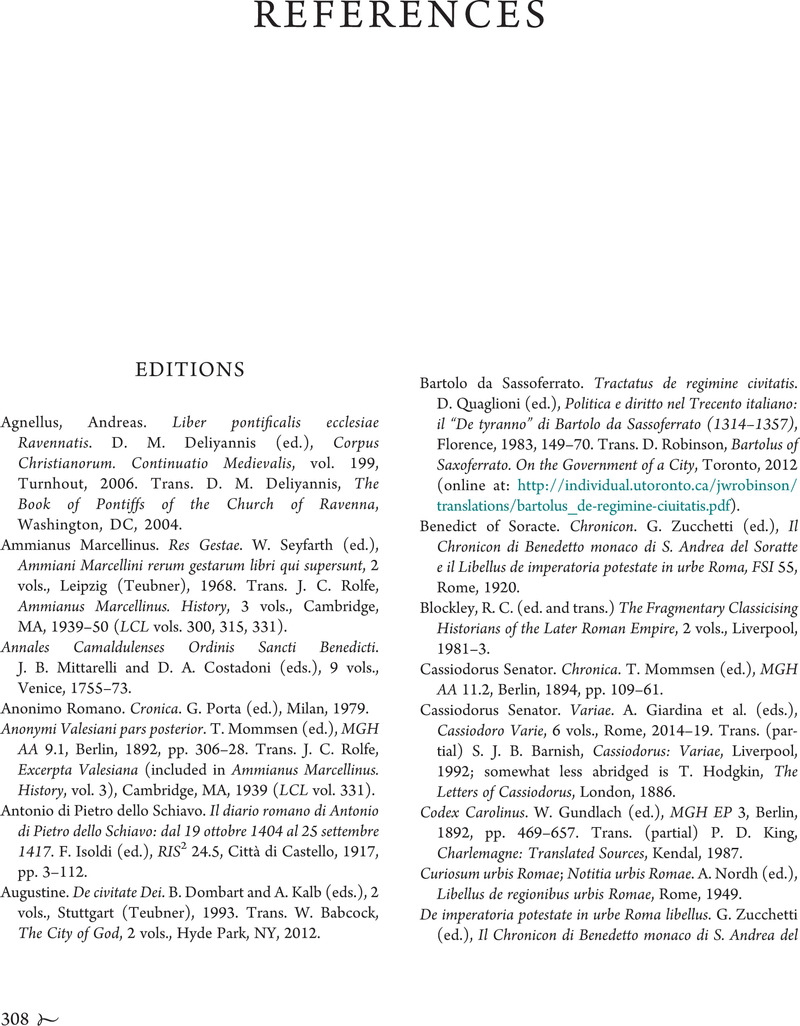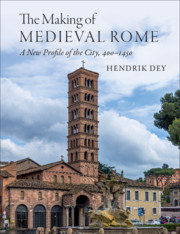Book contents
- The Making of Medieval Rome
- The Making of Medieval Rome
- Copyright page
- Contents
- Preface
- Introduction
- Chapter 1 The Eternal City on the Brink
- Chapter 2 401–552
- Chapter 3 552–705
- Chapter 4 705–882
- Chapter 5 The Long Twilight of the Early Middle Ages
- Chapter 6 1046–1230
- Chapter 7 1230–1420
- Epilogue
- Notes
- References
- Index
- References
References
Published online by Cambridge University Press: 30 September 2021
- The Making of Medieval Rome
- The Making of Medieval Rome
- Copyright page
- Contents
- Preface
- Introduction
- Chapter 1 The Eternal City on the Brink
- Chapter 2 401–552
- Chapter 3 552–705
- Chapter 4 705–882
- Chapter 5 The Long Twilight of the Early Middle Ages
- Chapter 6 1046–1230
- Chapter 7 1230–1420
- Epilogue
- Notes
- References
- Index
- References
Summary

- Type
- Chapter
- Information
- The Making of Medieval RomeA New Profile of the City, 400 – 1420, pp. 308 - 331Publisher: Cambridge University PressPrint publication year: 2021



